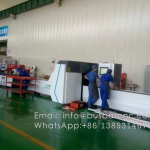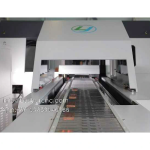Analysys Digitalization: Manufacturers in the field of “digital twins” are deploying low-code platforms for 3D visualization to help customers quickly develop digital twin visualization applications. API openness and extensibility are the key capabilities and selection keys for digital twin low-code platform application value amplification.
event background
Manufacturers in the “digital twin” field are laying out low-code platforms for 3D visualization to help customers quickly develop digital twin visualization applications. Leading manufacturers represented by 51world, Younuo, and ThingJS have all released digital twin “low-code” platforms in 2021.
Digital twin application low-code platform to accelerate the introduction of application scenarios
The main value of the low-code platform lies in the rapid introduction of typical application scenarios. The low-code platform provides full-stack visual programming capabilities, interface interaction process, and real-time preview capabilities. Developers can complete development work in more efficient ways such as graphical drag and drop and parameter configuration.
API openness and scalability are the key capabilities for digital twin low-code platform application value amplification
In terms of the ability to build and configure digital twin business scenarios, the low-code platform realizes the mechanism visualization of digital twins through graphical arrangement of business logic and scene cutting. For example, at present, it is possible to achieve low-code data access of IoT devices to a certain extent, and display the current production efficiency status by connecting device assets, so as to realize applications such as visualization of energy management and energy-saving analysis. However, in the process of building digital twins, it is still difficult to achieve low-code for high-precision virtual simulation of industrial cities and intelligent diagnosis and prediction models of high-level digital twins.
Analysys analysis believes that although the low-code platform of the digital twin already has the ability to quickly visualize some business function modules, we must be wary of some low-code platforms that only have the ability to make prototype tools, and have not yet realized the ability to use data and graph visualization. Digital twin application scenarios do not have the engineering capabilities to create complex systems. Users of the digital twin system need to supplement the personalized needs of the urban digital twin base through open APIs, which requires the low-code platform to have a certain degree of openness. The low-code platform not only needs to be able to import basic business components and industry backplanes in digital twin scenarios through graphical drag-and-drop and parameter configuration, but also needs to support secondary development after quick access to typical scenarios. Analysys analysis suggests that API openness and scalability need to be key elements in the selection of digital twin low-code platforms.
Future development trend Focus on overcoming “business complexity”
Even if a low-code platform is applied, the overall complexity of developing a digital twin is constant, but part of the complexity is transferred from the user’s IT department to the digital twin low-code platform. If the complexity of software development is divided into “business complexity” that is strongly related to the business domain and “technical complexity” that is strongly related to technical details, then what the digital twin low-code platform can do is to reduce “technical complexity”, This allows users of digital twin technology to focus on overcoming “business complexity”.
Analysys analysis suggests that users need to strengthen their own business logic and rules at the same time, and fix the industry mechanism mastered by business personnel in the system through the low-code platform’s visual logic arrangement capabilities, so that the digital twin system can be efficiently developed to the mechanism twin level. The two-pronged approach of API openness and business logic sorting escorts the successful implementation of digital twin applications.
Statement Notice: The third-party data and other information quoted by Analysys Digital in this article are all from public channels, and Analysys Digital does not assume any responsibility for this. In any case, this article is for reference only, not as any basis. The copyright of this article belongs to the publisher. Without the authorization of Analysys Digital, it is strictly forbidden to reproduce, quote or use any content published by Analysys Digital. Any media, website or personal use after authorization shall quote the original text and indicate the source, and the analysis point of view shall be based on the content officially released by Analysys Digital, and any form of deletion, addition, splicing, deduction, distortion, etc. shall not be carried out . Analysys Digital does not assume any responsibility for any disputes arising from improper use, and reserves the right to pursue responsibility against the relevant responsible parties.










